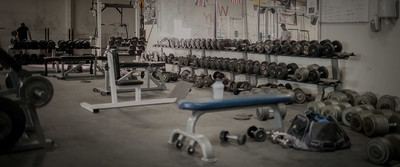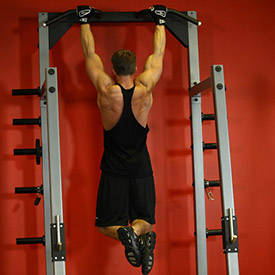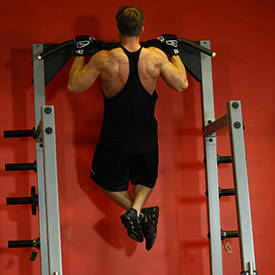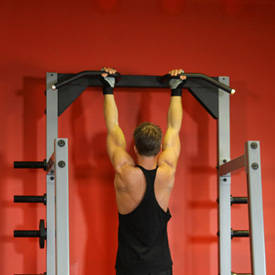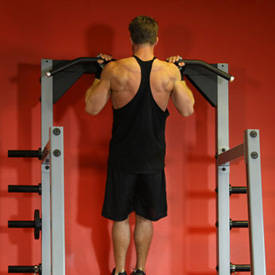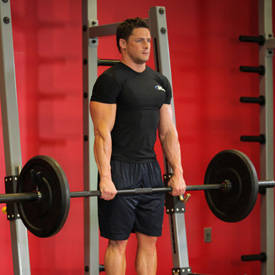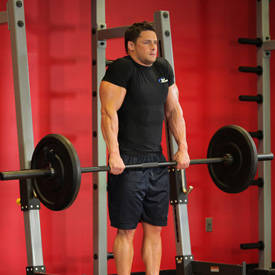Let's face it, a majority of the "old school" moves are hard to perform and people would rather go and perform the "new and improved" methods. This is very sad. Frankly, this kind of attitude shows that people are getting lazy. Old school moves are tried and tested. They worked before and they will certainly still work now! One perfect example is the pull-up.
Pullups are HARD. This is especially true for the beginners. Too many people have committed the mistake of settling with the lat pull-down machine. Boasting around with heavy weights on that machine is not that impressive. I am telling you now that investing the time to be strong at pullups is the way to go! It will develop quality muscle, power, explosiveness and body awareness.
 For The Beginners
For The Beginners 
I am writing this article to focus on those who will be starting from scratch and can't do a single repetition. Those who can only do 3-5 repetitions in pull-ups are in the same class as well. If you're a musclebound guy who is a legend on the lat pull-down machine but struggle to do a single pullup repetition, let me tell you that you are not alone. Many "strong heavyweights" experience the same problem due to the total neglect of the movement. Imagine the muscle developments that you will have if you can rep out pullups at your disposal. Is it possible? Of course it is! I have seen heavyweight bodybuilders do easy reps at the pull-up bar hoisting their heavy bodies, and get this...while adding heavy dumbbells for extra resistance! Yes people, they have freakishly wide backs. The point that I am getting across here is that it is not too late for anybody to start doing pullup-work. The benefits are tremendous and it would just be plain stupid to pass it up.
 The Basics
The Basics 
There are the two basic kinds of pull-ups:
Wide-Grip Pull-ups (Overgrip)
Hang on a bar with your hands more than shoulder width apart. Pull until the bar reaches chin level and then pause. Repeat.
Chin-ups
It is almost the same as the previous item but having the difference in grip. Your palms will be facing YOU. Same movement involved.
These two are the traditional forms of doing a pull-up. I am telling you now that there is no version better than the other. Each has its own set of advantages. Wide-grip mainly targets your upper lats. Chin-ups will aim the lower lat region, middle back, as well as your biceps. Performing these pulls regularly will help you develop the basic foundation of being able to do pullups in order to prepare yourself for the more advanced versions.
 Pull-up Status
Pull-up Status 
You're current status in doing pull-ups should be realized with 100% honesty. Test it for yourself by just hanging on the bar and see if you can do one. Don't be ashamed if you can't do a single repetition because that will change in no time given the fact that you will be investing the time and effort to improve in this area. There is no reason to be discouraged with the result since this will serve just as a gauging process for you to work on. After knowing the harsh reality, write it down. That is your current pullup status! Next thing for you to do is find a bar.
A bar can be found in any playground, in any construction site or even at your own doorway! The word "bar" is just a generic term for something to hang on.
 Improving Pull-up Status
Improving Pull-up Status 
In order to improve your current pull-up status, multiple methods can be used. No method is necessarily better than the other since different people will react in different ways. One method may not be useful to one individual but can cause dramatic improvements to another. Test what will work for you.
Terms You'll Need To Know
- Failure: That point in an exercise at which you have so fully fatigued your working muscles that they can no longer complete an additional repetition of a movement with strict biomechanics. You should always take your post-warm-up sets at least to the point of momentary muscular failure, and frequently past that point.
- Rest Pause: Do a set to failure. Rest for 5 to 10 seconds then do a few more reps with the same weight. Do this once or a few times depending on your energy levels and how far you wish to push. With this technique you can take a weight you can only do for a certain number of reps and increase that amount.
- Negatives: One or two partners help you lift a weight up to 10-50% heavier than you would normally lift to finish point of movement. Then you slowly lower weight on your own.
Below are two methods you will be using to improve your pullup status:
Static Holds
This method is basically just hanging on the bar. What you will do is hang on the bar on the top movement of the pullup and hold that flexed position until your muscles fatigue forcing you to drop to the ground. Rest and repeat for another hanging time period. You can use all the different grip variations within one workout.
Negatives
This was the method that I used when I was a teenager. Select the kind of pullup for you to use and jump up so that your chest will be over the bar. Gravity will do its role and bring you down after you jump. With all your might, resist gravity's force when going down. When you land on your feet just jump up again and repeat the negative.
Below are some methods for the individuals who can do a couple repetitions but struggle to get past the 3-5 rep mark:
Pause Reps
A traditional set is done by doing the movement continuously until the desired number of repetitions is met. Since failure is experienced early in the set, you will need to add rest in between repetitions. For example you are a person who cannot do more than 3 reps on a single set then using Pause Reps will certainly be useful. An example of a set using this scheme will look like this: 1st rep - Pause for 1 second - 2nd rep - Pause for 1 second - 3rd rep - Pause for 1 second - 4th rep - Pause for 1 second - 5th rep - Pause for 1 second. As you can see you just smashed your 3 repetition limit! You can also do this with two reps at a time, or pause less than a second and just let your body land to the floor before going right back up for another rep.
Full Ladder
A hybrid of the pause reps. You will be doing percentages of your maximum repetition limit mixed with the earlier discussed pause rep scheme. A set will look like this : 1st and 2nd rep - 2 second pause - 3rd, 4th and 5th rep - 3 second pause - 6th, 7th and 8th rep - 5 second pause - 9th and 10 rep. As you can see you've just done 10 reps compared to your 5 rep limit when doing traditional sets.
 Carry Over Effect
Carry Over Effect 
You might be asking "why bother when you have lat pull-downs?" Let me tell you, doing pull-ups will have a huge effect on your other lifts.
Below are just a few examples:
 1. Increase In Grip Strength
1. Increase In Grip Strength 
An important thing in ALL kinds of resistance training is grip strength. You cannot lift incredible amounts of weight with a puny grip. Your strongest muscles are useless if you cannot stimulate them due to a weak grip. Doing pull-ups will definitely improve this aspect since you will be holding up 100% of your bodyweight.
 2. Improve Your Overall Pulling Power
2. Improve Your Overall Pulling Power 
Your pulling muscles are composed of your back, traps, biceps and forearms. Each of them has staple exercises especially in bodybuilding namely barbell row, shrugs, bicep curls and wrist curls. What do these movements have in common? All of them have the motion of "pulling". If you want to go extremely heavy on them you need to build some basic pulling power. Pull-ups will definitely give you that. This will automatically give you a carryover effect on all of the mentioned exercises.
 3. Promote Upper Body Muscular Balance
3. Promote Upper Body Muscular Balance 
Muscular imbalance should be avoided at all costs. This will ultimately cause unnecessary injuries that will hinder your weightlifting journey. One common cause of these imbalances is focusing too much in pushing exercises (bench press, military press, etc) and neglecting your pulling muscles. Incorporating pull-ups will definitely give a carryover effect in promoting muscular balance in your upper body.
 4. Improve Your Pushing Muscles
4. Improve Your Pushing Muscles 
Related to the previous section, incorporating pull-ups will develop your pulling muscles and will ultimately carry over to your pushing muscles. Upper body pushing muscles (chest, front deltoid and triceps) are antagonistic muscles to your pulling ones. This means that when you are doing a pushing exercise, your pulling muscles stabilize the weight and vice versa. As you can see these are just a few reasons why a beginner would want to include pull-ups at the start of your program. Do yourself a favor and do so.
 Conclusion
Conclusion 
You'll be surprised what two to three times a week over a 4-week period can do for you here. You'll immediately smash old records and set new ones! All methods are applicable to all basic (and even advanced) forms of pull-ups. When you are able to get past the hardest phase of performing a single pull-up, the amount of variations and pulls you can do are almost limitless!
Note: I only included the basics of pulling up for this article. If the methods above did not work or if you have any clarifications, please do not hesitate to mail me.

